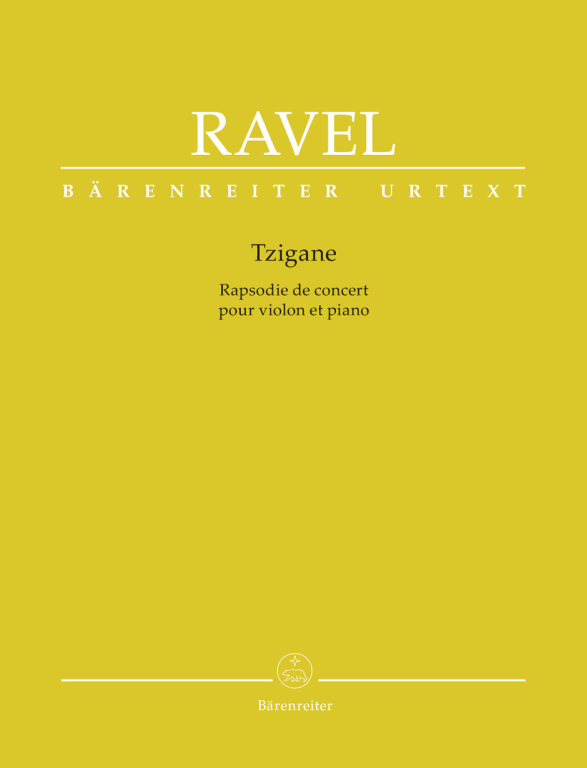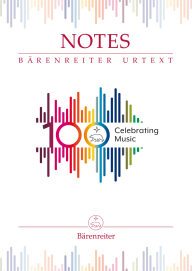Ravel, Maurice: Tzigane
Concert rhapsody for Violin and Piano
játszópartitúra
Written originally for violin and piano or luthéal (a mechanism invented in 1919 that attaches to a piano, producing a sound similar to the rich overtones of the Cimbalon), the premiere took place in London in April 1924. The composer had finished the work only days beforehand. Ravel later orchestrated 'Tzigane' and both versions remain a 'must' for music-lovers and aspiring violinists today. Jelly D'Aranyi performed both versions regularly throughout her long career.
This Urtext edition presents the first scholarly-critical edition of Ravel's masterpiece. It is published both in the orchestral vers ion, complete with full score and performance material, as well as in the composer's earlier version for violin and piano. All known sources, including letters, have been drawn on for the new edition, one of the available sources, consulted for the first time, was a copy of 'Tzigane' from the estate of Jelly D'Aranyi, which is today part of a private collection.
The version for piano and violin contains, besides the Urtext part, a second violin part as a facsimile with performance instructions by Jelly D'Aranyi. D'Aranyi's alterations and fingering reflect how Ravel must have heard the work in rehearsals and performance and as such are a document of early 20th century performance practice. The cooperation between Ravel and D'Aranyi is comparable to that of Brahms and Joachim working on the Brahms violin concerto.
1923 őszén egy fiatalember szülei nappalijában készítette el frissen alapított kiadójának első zenei kiadványait. Cégét Bärenreiternek nevezte el. 1924 tavaszán, amikor Karl Vötterle nagykorú lett, bejegyezhette kiadóját a Német Könyvkiadók és Könyvkereskedők Szövetségébe. Eleinte főként népdalgyűjteményeket, egyházi, valamint orgonazenét adott ki, köztük Leonhard Lechner és Heinrich Schütz műveit, melyeket akkoriban elsősorban szakmai körökben ismertek.
A második világháború utolsó hónapjaiban a kasseli kiadó megsemmisült, és mindent újra kellett kezdeni. A német zenei enciklopédia, az MGG – „Musik in Geschichte und Gegenwart” –, valamint számos tudományos-kritikai összkiadás, mint például a „New Mozart Edition” és a „New Bach Edition” elindításával a kiadó határozott vízióval bíró alapítója kijelölte az utat a Bärenreiter továbbfejlődéséhez. A zenetudományi kiadványok egyre nagyobb érdeklődést és elismertséget váltottak ki.
Amikor Karl Votterle 1975-ben meghalt, lánya, Barbara vette át az irányítást, férje, Leonhard Scheuch támogatásával. Vezetésük alatt a katalógus jelentősen bővült, és létrejött a BÄRENREITER URTEXT márka. 2003-ban fiuk, Clemens Scheuch is csatlakozott a kiadóhoz, amelyet ma szüleivel együtt vezet. Így a Bärenreiter a mai napig családi vállalkozás maradt, és a komolyzene világában nemzetközileg elismert vállalattá vált.

 Deutsch
Deutsch English
English Español
Español Français
Français Polski
Polski Română
Română Slovenský
Slovenský Slovenščina
Slovenščina 中文
中文
















